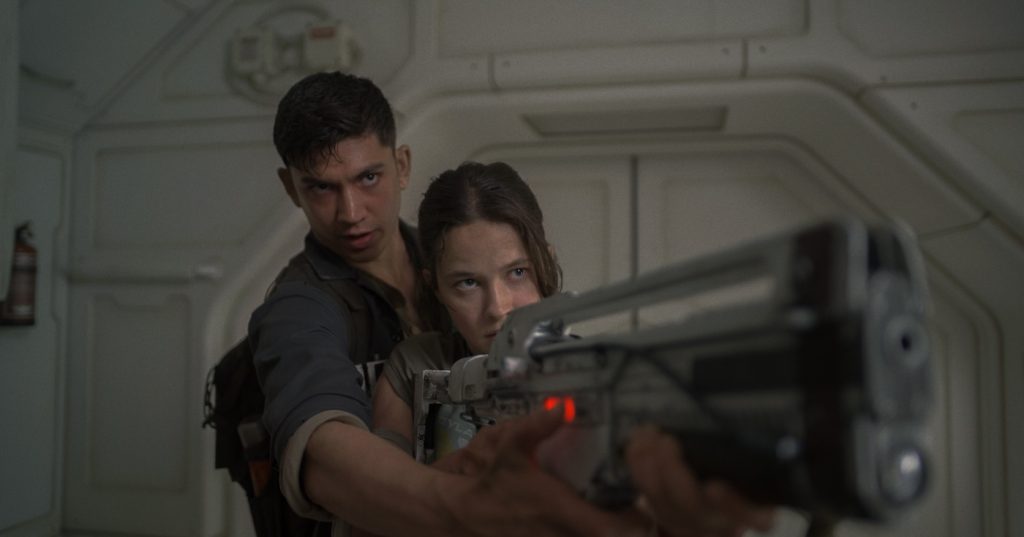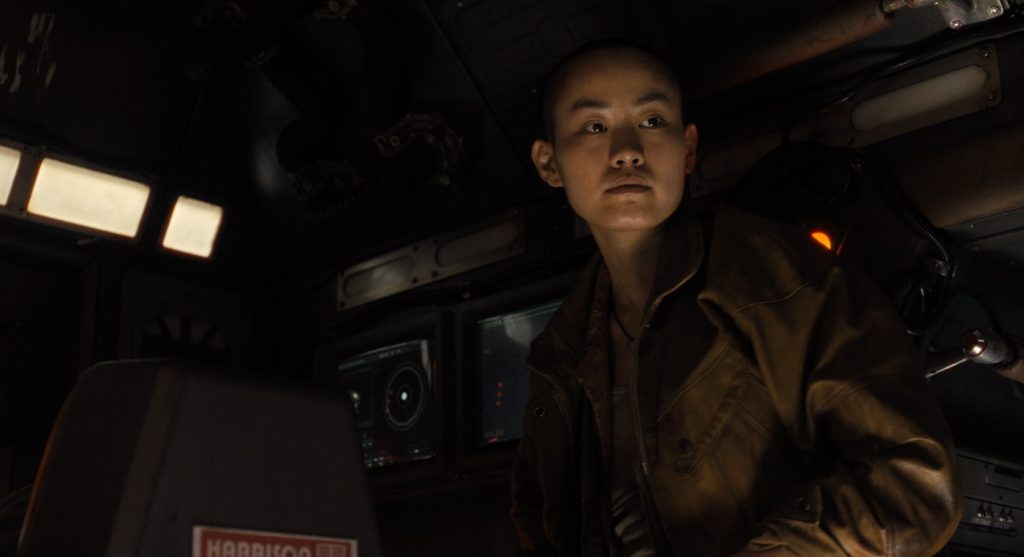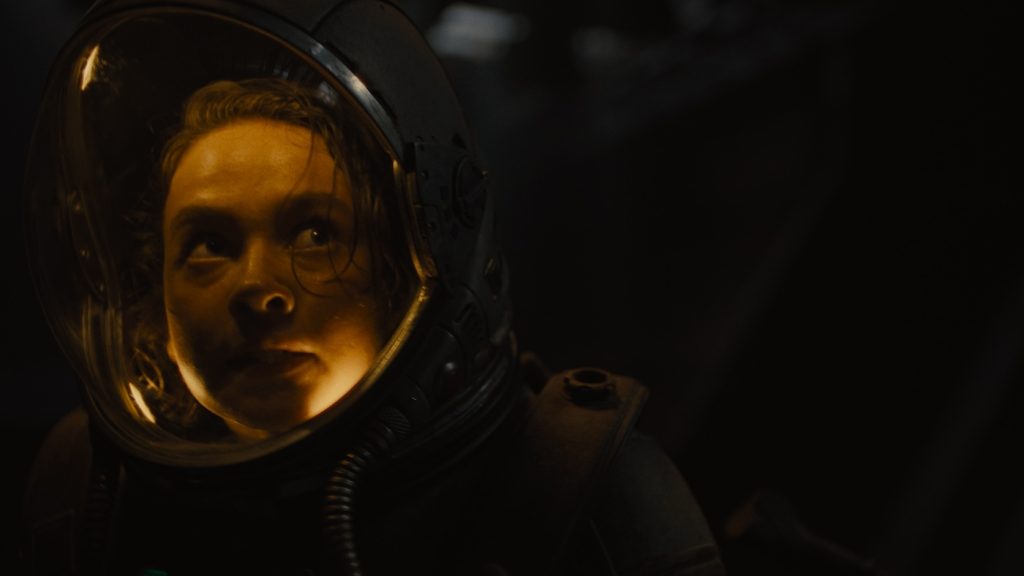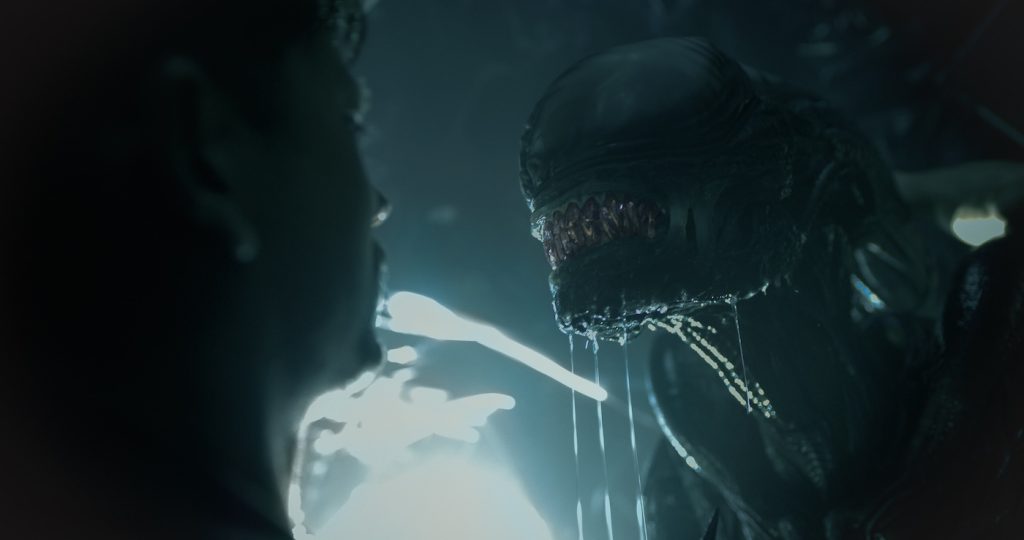Designed to Shred: How “Alien: Romulus” Costume Designer Carlos Rosario Stylized Horror
Previously, we talked to Alien: Romulus costume designer Carlos Rosario about how American farmers’ attire from the 1940s-1960s inspired some of the wardrobe for our Jackson’s Star inhabitants and several sartorial callbacks from the first two films in the franchise.
In part two, Rosario discusses how director Fede Alvarez’s approach to his ferocious interquel helped the designer account for the wear and tear on the costumes, caused, of course, by the endless carnival of extraterrestrial nightmares the characters encounter on a decommissioned space station.
This film was shot chronologically—how did that impact your workflow?
It’s much easier for us to shoot in chronological order, especially in movies with so much action that physically impacts the costumes. We don’t need to reinvent where the tears, or blood and acid blood go; the costumes are worn down naturally as filming happens.
How long was your team on this project?
We started prep in November 2022 and shooting in early March 2023 until the strikes in July. Then, we had two weeks of reshoots this January in Budapest.
How many costumes were made, and were they mostly done in-house?
Everything was prepped and shot in Budapest. We made about 75% of the costumes. Since Fede had a very specific vision, it was easier to make them in-house because we knew exactly what he wanted for the color palette, etc. Every costume had multiples of 20-25. Even though the costumes were limited and very minimalist, it was a lot of work. We needed all the multiples because of the blood, action, and acid from everything that happens. One of the biggest challenges was that the cast came for the first fitting less than two weeks before shooting, and their costumes needed 20-plus multiples. Except for Rain, I didn’t know who the other actors were until very close to filming. So, I bought multiples in various sizes in Budapest or online to create a stock. I needed at least 10 multiples ready by the first day of shooting, so I needed a big stock for options.

What are some of the statement pieces for this film?
For Navarro’s Hawaiian shirt, we made our own pattern and printed 50-60 yards of that fabric to make 12 shirts for her [spoilers] because of the way she dies. I love that shirt. Her leather jacket is beautiful and based on the ones from the ’80s.

Is there a meaning behind Rain’s [Cailee Spaeny] big red jacket?
We made that for Rain. Red is tricky on camera, especially with the lighting they used. Many scenes are very dark, others are very colorful, and there is a lot of yellow light, so it was tricky. We made three to four prototypes with different red fabrics to see which one would work best and settled on this red waxed cotton fabric that broke down very beautifully. Fede wanted her to wear an oversized, puffy jacket where she could hide herself. Since they’re wearing the same costume for two hours, I gave them a lot of layers. So, as the action evolves, they remove their layers. Deconstructing the costumes makes it more interesting for the audience and lets the actors play more with the characters. Rain wears a green T-shirt with Weyland printed on it, which Fede wanted to incorporate.
What was it like to design the sneakers with Reebok?
Rain’s sneakers were probably the big statement piece. It was a dream come true to collaborate with Reebok—they designed the sneakers for Sigourney Weaver’s Ripley, so that was a really big deal for me. They started selling those online, and I think they sold out in three minutes! Reebok showed me everything they had in their archives with that 80s feel, and there was one that I really loved. Originally, they came with white laces, but I changed them to red, mostly because Fede loves red—it’s always a major color in his movies. Since he wanted Rain to wear the red puffy jacket, I thought it would tie it all together by adding the red laces. He needed a pop of color, so we painted the outer sole red. Since I knew there were a lot of Zero G sequences, we would see the bottom of those sneakers a lot, and the lighting would catch the red. The interesting thing about horror movies is that everything is very dark, and when the characters wear white sneakers, it just grounds them because you actually see their legs.
Since some of the story takes place in Zero G, how did that impact the costumes?
To accommodate the thick harnesses under the costumes, we had to make many costumes in bigger sizes, plus more for their stunt doubles, all in different sizes. Usually, the harnesses are in two wires, but ours had four wires. Depending on the weight of the stunt person and the actor, those wires needed to be placed differently on the harness, impacting where we put the holes in the costume. So, we needed many fittings to make sure they worked with the wires.

[Spoiler alert!] As Fede has mentioned, the violent chest-burster sequence was done with practical effects and not CGI at all, so everything we see happening to the characters happens to these costumes. How did the costumes survive the onslaught?
The characters go through so much, and the way they die is so brutal and complicated, so we needed all those multiples to reflect the impact of the blood on the costume, the acid, and everything that happens throughout the action. Some of the costumes were divided into three parts to make it work because some actors have prosthetics attached to their bodies, like fake bellies, which made it more complicated. For each character, I think they had five to eight stages of breakdown of blood and acid to their costumes. So, for each different step, we needed to keep a couple of multiples. That’s why we got to 20-25 multiples per character. The technical aspect was quite challenging, but the creative aspect was really interesting and a lot of fun.

Alien: Romulus is playing in theaters now.
Featured image: Cailee Spaeny as Rain Carradine in 20th Century Studios’ ALIEN: ROMULUS. Photo courtesy of 20th Century Studios. © 2024 20th Century Studios. All Rights Reserved.



